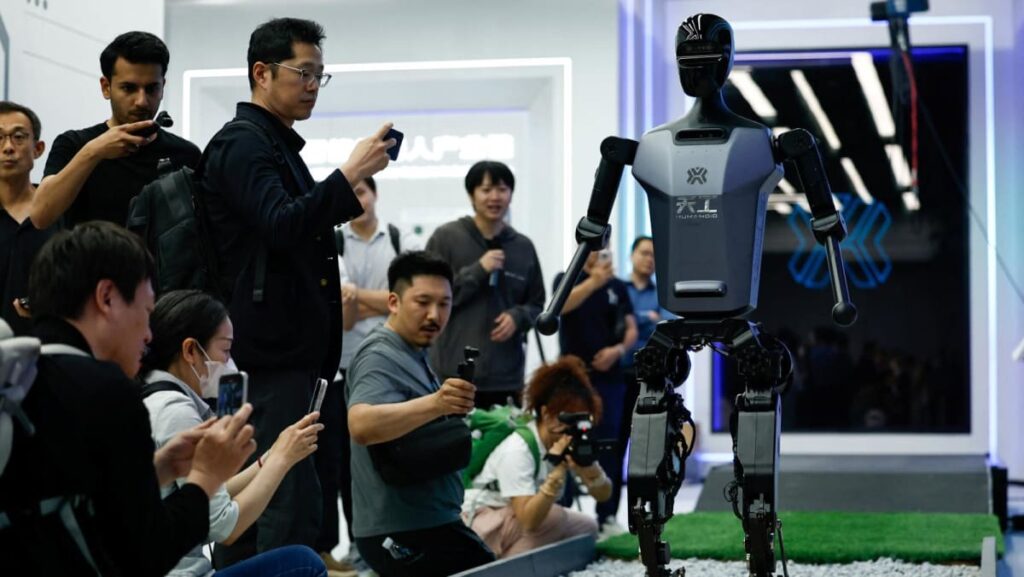Liang explained that the world’s first robot half-marathon held last month in Beijing was deliberately set up in a way that would highlight his and other officials’ hopes that these humanoids will support and assist humans, rather than replace them.
The half-marathon featured two tracks separated by a railing, with humans competing against each other on one side while on the other side 20 teams each operated a robot, varying wildly in size and ability.
“You see, in the marathon, humans have their track where they push their physical limits, and the machines have their own track where they jointly challenge their limits – but they aren’t trying to take over the human course to sprint to the finish line. The future will be like this too,” Liang said.
Liang spoke to reporters at the headquarters of state-backed X-Humanoid, also known as the Beijing Humanoid Robotics Innovation Centre, whose robot Tiangong Ultra won the inaugural robot half-marathon.
Besides the sports-focused Ultra model, which can reach a top speed of 12kmh, the centre also displayed other protypes that showed it was working on robots that can complete mundane tasks in the face of obstructions and changing environments.
In one demonstration, an employee repeatedly moved the position of a piece of litter or snatched it from the robot’s hand, which would then relocate the object and carry out the task until it was completed, a self-corrective ability the centre says will be key in turning the humanoids into productive workers.

